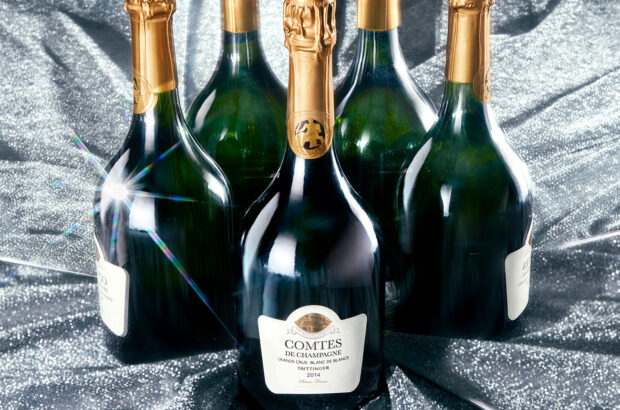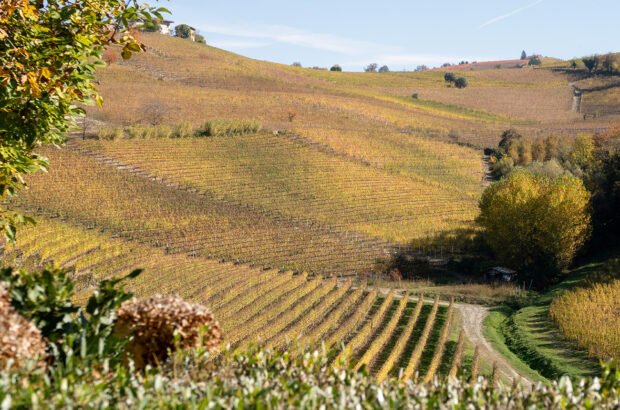Last year, there was much mirth on wine Twitter about a particularly excruciating tasting note. You’re right. The wine trade needs to get out more. But still… this one was a beauty. It began well enough – really quite beautiful, in fact. But before long the imaginative descriptions were getting more ornate and strained. It moved from poetic to meaningless before finishing with a reference to Burnt Norton – the first of TS Eliot’s Four Quartets – that put it firmly in Private Eye magazine’s Pseud’s Corner.
Unsurprisingly, on social media, people were amused, appalled, infuriated and aghast in more or less equal measure.
It caused me, in an unguarded moment, to create the Crap Tasting Note of the Year awards* on my satirical website Fake Booze. And that brought in a whole plethora of submissions. From sommeliers and buyers to egocentric journalists and keen-but-misguided amateurs, there are a lot of bad notes out there.
And they can be bad for any number of reasons too. Boring, florid, onanistic, irrelevant… you name it, there will be hundreds of examples of it.
But why? Why is it so hard to write a decent tasting note? Because it clearly is. When researching this article, pretty much the only things that everyone agreed on were: i) it’s difficult, and ii) hardly anyone does it well.
The first thing to point out, perhaps, is that they’re constantly evolving. Go back a few hundred years and a tasting note’s job was, essentially, to tell you whether a wine was drinkable or might have much the same effect as contracting bubonic plague.
‘Their key focus was whether wine tasted like wine – and if not, had it been adulterated or weakened,’ explains Victoria MacKenzie MW, head of product development, wine qualifications, at the Wine & Spirit Education Trust (WSET). ‘It wasn’t until the 20th century that tasting notes became more detailed.’
More detailed, yes. But not necessarily more uniform. In his 1983 book Le Goût du Vin, the great French wine guru Professor Emile Peynaud (recipient of the Decanter Hall of Fame award in 1990) commented that ‘every interested organisation… seems to have its own model… Even the smallest school of viniculture devises its own tasting sheets’.
Follow the science

Credit: Sarah J Coleman / Central Illustration Agency Ltd.
There were, perhaps, three big changes in the development of the tasting note. The first happened in California in the 1970s, when Professor Maynard Amerine at UC Davis set out to make the process more scientific – to apply objective analysis to what had previously been rather more subjective and emotive.
This was followed up in the 1980s when Dr Ann Noble – also of UC Davis – added to Amerine’s research with the invention of the aroma wheel, a brilliant device that attempted to help tasters recognise categories and specifics of flavour, and that is still widely used today.
Finally, there has been the development of the WSET tasting technique. This is a particularly significant one, because although the WSET started in London, it has become global – and globally recognised – in its reach.
The WSET’s tasting notes started quite simply with a general ‘topics for discussion’ framework: Sight, Nose, Palate, Conclusions. But by the mid-1990s, tasters were being given suggested markers to look out for. Was the nose fruity or vegetal? Was the acidity high or low? The finish long or short? It was a way of helping tasters get started, then for them to develop their own vocabulary and language as they went.
But as the Trust began to teach courses all over the world, this free-form ‘marked by trusted centralised examiners’ model no longer worked. It required a standardisation of terms, to ensure that the burgeoning number of papers could be marked locally and still be consistent; that a WSET Level 3 in the UK was the same as a WSET Level 3 in Hong Kong.
By 2003, WSET had introduced a ‘tick grid’ of terms – a lexicon of aroma and flavour descriptors that students needed to stick to in order to pass the WSET exams.
‘The terms of the lexicon are not mandatory,’ points out MacKenzie. ‘Students can use descriptors outside those given in the lexicon. However, we do discourage the use of very personal descriptors that others (including the examiners) are unlikely to fully understand.’
Precision vs subjectivity
The WSET, in other words, is creating a global language of wine – a tasting note Esperanto. It’s a laudable attempt to impose order on millions of palates all over the world, all of whom taste very differently. So can it work?
‘It’s just our laboured attempt to untangle something that the brain’s already done for us.’
Jamie Goode, respected wine critic and science geek, isn’t sure, believing that attempts to bring unimpeachable rigour to tastings – however well-intentioned – are doomed to failure. ‘It makes us think that we have something precise,’ he says. ‘That we can actually go in there with the aid of this [flavour] chart and set of descriptors – medium plus, medium minus – and actually produce something that’s data. And it’s not data – it’s just our laboured attempt to untangle something that the brain’s already done for us.’
And the human brain is famously unreliable. I remember editing tasting notes for the now-defunct Wine magazine 25 years ago, in which two highly respected panellists independently described the same Champagne as having a ‘classic Chardonnay nose’ and ‘pure Pinot Noir expression’.
Given how hard it is to attain exactness with something as subjective as tasting, is there perhaps merit in going 180° the other way? A recent wine workshop in the south of France encouraged tasters to eschew traditional tasting notes in favour of asking questions like ‘With whom and where would you like to drink this wine?’, and ‘Does it conjure up any memories for you?’.
Those who were there enjoyed the process and found it thought-provoking, but said they’d probably still back up any responses with ‘proper’ notes for their own benefit.
And this, perhaps, is a key point. Tasting notes have different jobs to do, depending on who is writing them and when. Wine buyers who are tasting a large number of wines in a short space of time, for instance, won’t write a full note for each one (see box, below).
Jamie Matthewson, wine buying manager at Waitrose, scores wines with one to five ticks, and writes ‘technical notes’ that help him recall the wine in his head, and to define why one is different from another. But those notes are not designed for public consumption.
Consumer appeal

Ronan Sayburn MS
So how do you go from emotionless, reductive ‘trade’ notes to ones that inspire the public?
‘You need to think about who’s going to be buying it and what type of things they’re looking for,’ Matthewson says. ‘So a £4.99 wine will appeal to different people, and demand a different tasting note, than a £50 Burgundy. ‘Or it may be the same person buying them, but they will be looking for different guidance when buying those two different wines.’
In fact, ‘selling notes’, which laud a wine’s food-matching abilities or value for money, might not even mention the taste of the wine at all.
It’s a similar story in the restaurant world. Ronan Sayburn MS, head of the Court of Master Sommeliers Europe and Co-Chair of the Decanter World Wine Awards, says sommeliers studying for the MS qualification learn a logical, analytical way of deconstructing a wine – partly to help them pick it in a blind tasting exam.
Sayburn gives Condrieu as an example, which he would be able to recognise in just a dozen words: ‘peach/stone fruits, ripe, med acid, m+ alcohol, creamy oak, lactic character’ – though this would have to be adapted into more engaging language when speaking to the public.
Finding a voice
‘What I’m trying to do with a tasting note is find the thing that makes that wine “that wine”, and then amplify it.’

Rebecca Palmer, Corney & Barrow
The tone of notes needs to be adapted not just for their intended audience, but also for the wine they’re describing. Rebecca Palmer, buyer for merchant Corney & Barrow, writes hundreds of notes for its website. Simpler wines, she says, do best when the note evokes an emotional response – she mentions describing a Sauvignon Blanc as a ‘star jump in a glass’ – but more expensive wines require more measured treatment.
‘It has to be a denser note, because there’s more going on,’ she says. ‘What I’m trying to do with a tasting note is find the thing that makes that wine “that wine”, and then amplify it.’
Several tasters talk of the importance of allowing a ‘voice’ to come through in the tasting note. And this, perhaps, is where the maximum danger comes. After all, one person’s ‘charmingly poetic’ is another’s ‘cloyingly florid’. Nobody will be inspired by a dull note, but showing a bit of personality is only a benefit if people like it.
‘The tasting note is where the world of wine meets the world of linguistics,’ says Anne Krebiehl MW, editor-in-chief at Falstaff magazine. ‘It takes a talent for both of these things to be able to come up with something that is interesting and meaningful to read.’
It also requires the ability to self-edit, which, as anyone who follows social media knows, is not a widespread human characteristic.
But, as a rule of thumb, if you find yourself referencing the godfather of modernist poetry, probably take that bit out…
*To see last year’s Crap Tasting Note of the Year winners, go to fake-booze.com and search for the Crappies
Different strokes: a sommelier writes…
We asked Tamarind Collection head sommelier Andres Ituarte how he’d describe the same premier cru Chablis for his own professional use, and for different styles of venue…
For professional use
When writing notes for myself, I definitely write in shorthand. Acidity, body, balance and finish are really all I comment on. I also regularly use a three-star system to give a point of reference. Smiley faces or frowns can make an appearance as well!
• My note in a supplier tasting:
Zippy acids, killer minerality.
Fresh and well-made. ***
• My judging note in a competition:
Dry, with well-balanced, fresh acids. Notes of green apple peel, grapefruit pith and lemon. Good weight, loads of limestone and pretty white flowers. Long minerally finish brings you back to the glass.
For the public
I hate wine lists with producer profiles and descriptions of vintages. They’re not what anyone wants, particularly these days. So, short and sweet is the game here.
• Fine-dining:
Shamrock apple and lemon verbena dance on this dry, mineral-driven palate. Delicate notes of lilies and manuka honey on the finish.
• Casual restaurant:
Bright green apple and lemon zest notes with limestone minerality. Perfect accompaniment for our lobster ravioli with tarragon or sautéed trout with lemon chive butter.
• Trendy spot/bar:
This wine encapsulates the place it was grown in. Taste the chalky limestone soils with bright, fresh citrus flavours. Honeysuckle and perfume give elegance to this beautiful wine.











